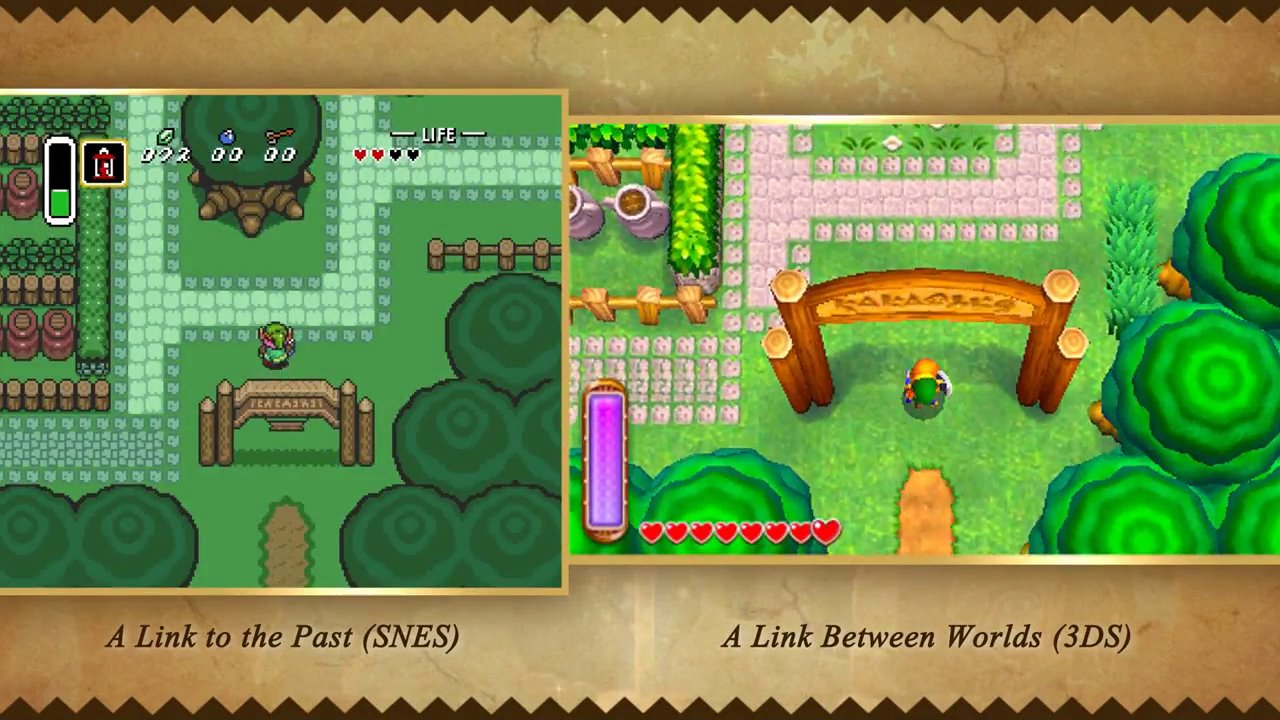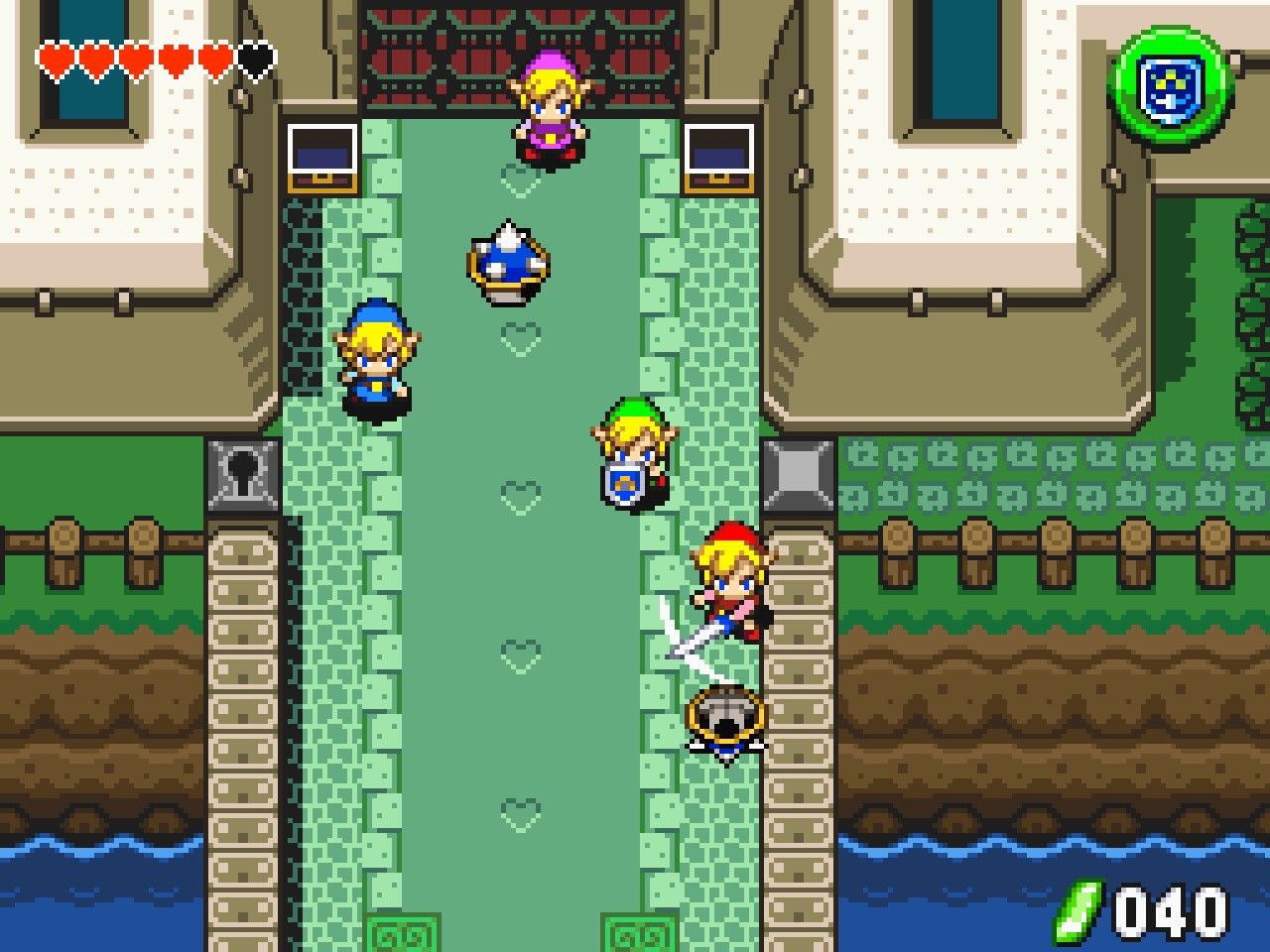

"We used a lot of the base material from Link to the Past, setting it in that same world to kind of deepen the entire experience. Once the developers decided to make A Link Between Worlds a sequel, they really threw themselves into that connection, although they worked to make this game a unique Zelda title. And I have confidence that when people play it, they will feel it's more like they've played a new title." "But I think, more than being a sequel, A Link Between Worlds, it's not really a sequel so much as I think it's a new title. "So I think even with me, if I had thought back to what I thought of Link to the Past and said, 'All right, since we're making a new game in that world, a sequel to that, Link to the Past was like this so this new game has to be like that' - I don't think that would've matched fans' expectations, either," he continued. So I think there's always this phenomenon where things in the past always end up getting viewed more favorably," said Aonuma. "On the topic of Star Wars, I was one of the people who felt that way about the new films as well. He told us that while he didn't necessarily feel any additional pressure in making A Link Between Worlds, it was important for him to check his nostalgia at the door and not try to recreate the magic of A Link to the Past. We asked Aonuma if he was apprehensive about retroactively dampening the affection fans maintain for A Link to the Past by developing a sequel to it, in much the same way that the newer Star Wars trilogy left a bad taste in the mouths of fans of the first three films. “We could’ve made this game, or a game, without having Link to the Past as a base” "Because we have the ability to go into the walls, and then contrasting that with the top-down view, that was basically the kernel of the game - that mechanic, and then those two contrasting camera views." "But we could've made this game, or a game, without having Link to the Past as a base," he said. Wind Waker HD, as a remake, couldn't have existed without the GameCube original, and A Link Between Worlds ended up as a sequel, Aonuma noted. Aonuma elaborated on that in our interview. Only when the developers were thinking about the wall merge ability they had come up with did they land on the idea of doing a sequel to A Link to the Past, with that title’s world as a base for the new game. Aonuma noted that Silver Rupees - worth 100 Rupees - are more plentiful in A Link Between Worlds than in previous Zelda titles, since players will need more spending money for rentals and purchases.Īonuma told the crowd that although A Link Between Worlds is a follow-up to The Legend of Zelda: A Link to the Past, it didn’t start out that way.

Link decides to rent bombs for 50 Rupees first, then buys the bow and proceeds to blow up a fissure between two stones to access a new area. In the footage, Link enters Ravio's Shop, where he can rent a bow for 50 Rupees or buy it for 400 Rupees - Ravio offers a half-price deal on the purchase because it's Link's first visit. The other was to give Link the ability to merge with a wall, at which point he turns into a version of himself that looks like a cave painting and can travel between Hyrule and Lorule, the two different worlds in which the story takes place.

#A link between worlds zelda design differences series
One of the main ways in which Nintendo attempted to shake up the Zelda series in the upcoming game was to allow players to rent items and weapons at their discretion, so they can approach dungeons in any order they choose. The developers completed the game about one week ago, said Aonuma, before he began talking over gameplay footage to explain what's unique about A Link Between Worlds. "I think they're even more passionate than the fans in Japan."ĭuring the panel, Aonuma briefly touched on The Legend of Zelda: The Wind Waker HD, the well-received Wii U remake of the cel-shaded seafaring adventure, and then launched into a lengthy discussion about the origins and development of the latest Zelda title, The Legend of Zelda: A Link Between Worlds. It really made me realize that man, the fans here are so passionate," he continued. "It was kind of crazy, the way I would say one little thing and get this huge reaction from people. "This is actually the first time I've ever been able to be in front of fans and speak the way I did today," said Aonuma through a translator in an interview with Polygon shortly after the panel, which took place Friday afternoon. As he was introduced and came up to the dais, the packed room gave him a sustained ovation, and his talk itself was interrupted by applause almost as much as a State of the Union address. On Friday, Eiji Aonuma was a man of the people.Īonuma, the longtime producer of the Legend of Zelda franchise, was the host and star of Nintendo’s lone panel at New York Comic Con 2013.


 0 kommentar(er)
0 kommentar(er)
